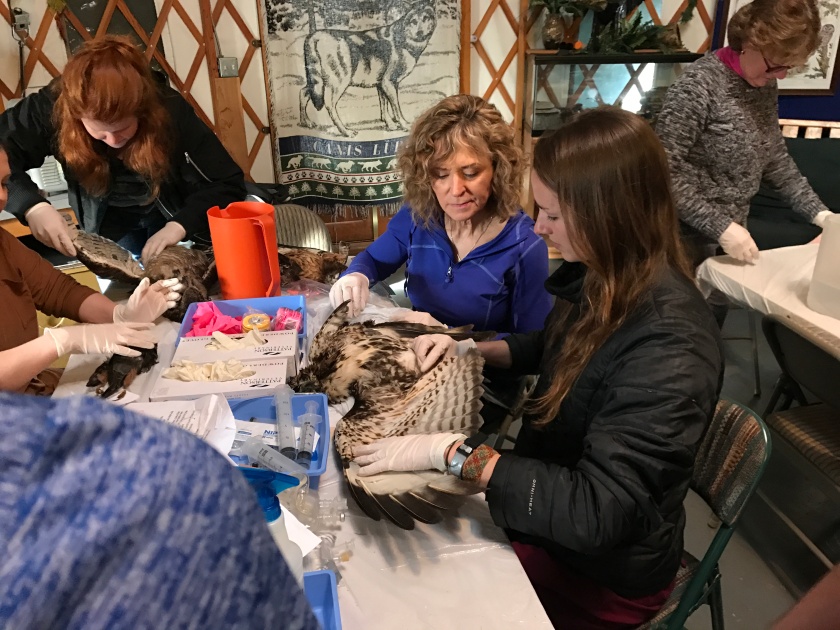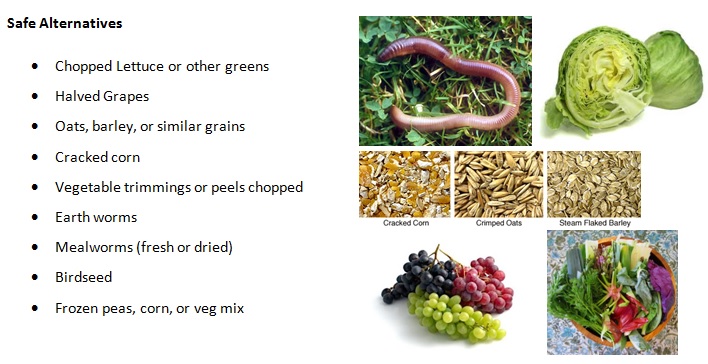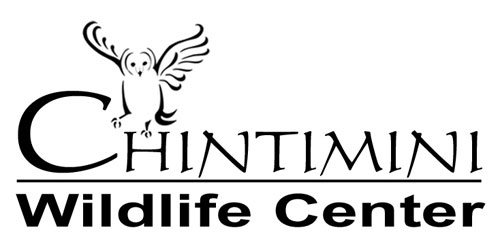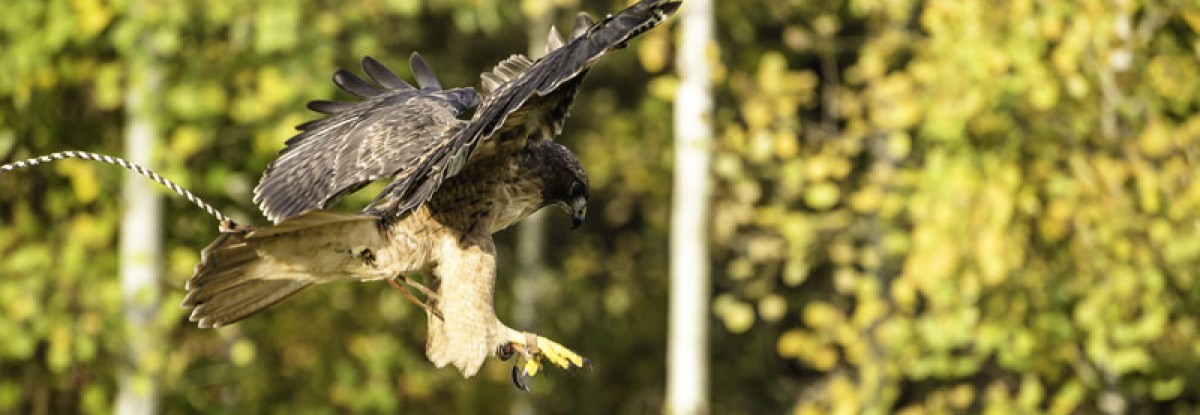Every year CWC offers volunteers a chance to gain hands-on experience with additional training beyond what they normally encounter on shift. Considered a “beyond the basics” course, volunteers practice performing initial examinations, administering subcutaneous fluids, tube feeding, and wing wraps for wing fractures. We use deceased patients so volunteers can be more thorough and not have to worry about time constraints.
Here’s a look at one volunteer’s experience at the Level 2 Training that took place earlier this year:

A Hawk in Pink
Emily Anne Martin, Sunday AM Shift Leader
Where the heck did all of these people come from?!
I inwardly exclaimed as I turned my car into the parking entrance for Chintimini Wildlife Center. I’d just arrived to complete the Level 2 Volunteer Training and was thrown for a loop when I realized that for the first time since I began volunteering in 2016, I may not be able to find a parking spot. On the other hand, it was rather refreshing to take a break from my previous thoughts; I’d spent most of the drive trying to wrack my brain as I struggled to remember medical techniques or animal handling methods I had been taught in college. Apparently there is some truth to the old phrase “use it or lose it.”
I wasn’t discouraged though. Refocusing on the task at hand, I hurried down to the yurt and joined some of the dozen or so individuals milling around the building. I glanced around and didn’t immediately recognize anyone. Still, it was exciting to get to interact with some of the other shift volunteers and I immediately began chatting with one lovely young woman until we received the call to come inside the yurt.
We blinked as our eyes adjusted to the dim interior of the yurt, while all of the students crowded around the tables. I became intrigued as I looked over the odd assortment of syringes, gauze, and tubes within each container. Our attention was called to the center of the room as Jeff, the Executive Director, stepped up to the stage and introduced himself and the other workshop leaders who came to help out. We were given a general overview of what would be covered during the workshop. They told us that we would be learning how to assess and evaluate a patient when it is first brought in, how to administer subcutaneous fluid treatment and specialized feedings, and finally, how to bandage and stabilize broken bones or fractures.
I felt a sense of déjà vu as Mary and another staff volunteer proceeded to start the PowerPoint. Sitting there at the small table, with my notebook and pen in hand, it almost felt like I was back in college. Once the workshop began however, my eyes were glued to the screen and my pen scribbled furiously over the paper.

In the beginning, we concentrated on the impact of stress to a patient’s well-being. The staff emphasized that minimizing auditory, visual and physical stress from handling is critical from the very first minute the patient arrives at our doorstep. For shock, a loss of proper circulatory function, can set in rapidly and unexpectedly. Because of this, sometimes the best thing to do for a patient is to simply leave it alone for a few minutes and give it some time to decompress. This surprised me as I had always thought that you should go into a case at full charge, ready to administer treatment and save the day for the animal. Then again, I’ll be the first to admit that I’ve probably watched way too many veterinary and medical TV shows over the years.
Next, the staff members began to open up the four or five tubs set up near the tables. We were told that inside of the bags were deceased birds that had been brought to Chintimini and unfortunately succumbed to their injuries or had been euthanized.
These past patients however, were going to help us learn how to provide medical treatments to future patients.
Even though we focused on avian patients and the vast majority of our patients are birds, the skills we were learning would be transferable to animals of all shapes and sizes.
I was amazed, for I had thought that we would be learning and practicing medical procedures on stuffed toys. After each of us received a bag we proceeded to open them up and familiarize ourselves with our deceased “patients”. Birds of every shape and size from House Finches to Great Horned Owls appeared in front of each student. Each bird came with a tag that described the animal’s cause of death as well as any injuries it had. As they began to explain to us about performing examinations and assessments on newly arrived patients, a challenge was thrown out to the students: to see if we could correctly diagnose our patient’s injuries.
I’ve always been a girl who liked a challenge, so I was eager to test my abilities.
It was stressed that in order to minimize any mistakes or oversights, exams should be performed in the same manner each time. Just like that old song about working your way up from the leg bones to the neck bones, each patient should be examined in the same head-to-tail manner. Staff explained the importance of exams lasting no longer than 30-60 seconds and that in an ideal situation, two people should perform the exams to ensure that nothing is missed. I pictured the massive talons on some of our Great Horned Owls and I immediately agreed with the notion.
We turned to our patients on the table and began to conduct our examinations. I turned to my Red-tailed Hawk, and under our instructor’s guidance I began evaluating the body condition by feeling the amount of muscle over the keel. The sharpness of the bone helped me determine that the bird had been underweight, giving him a body score of 1 out of 5. I then began assessing the bird for any injuries or trauma, but I didn’t see any abnormalities. I looked at his feathers, and while I see signs of lice, the overall condition of his feathers seems fine to my untrained eyes. But as I felt the bones of his neck, the floppiness convinces me that he must have a broken neck.
Ah-hah! I think. I’ve solved it!
But when I informed one of the staff members about my discovery, I was very gently but abruptly brought down from my brief moment of glory.
“His neck is completely fine. That floppiness, well that’s normal when they’re dead. ”
Oh…Okay then. I turn back to my Red-tailed Hawk and sigh. Back to the drawing board, I think.
I quickly recuperated and re-started my examination. Eventually, with the staff’s help, I realized that what had appeared like a small contusion was actually a contact burn from an electric shock. Apparently the bird had come into contact with an electrical line and succumbed to the burns and broken wing he suffered as a result. I’m amazed to realize how significant a small injury can actually be and I determine that I’ll never underestimate such a small wound again. My table mates and I exchange our patients so we can examine the other injuries and traumas that are present at our table. After about twenty minutes or so, we are then called back to the front to begin the next phase of the workshop.
The next phase is for us to learn how to administer subcutaneous fluids to our patients and conduct tube feedings. We learned that mammals get their fluids administered near the scruff, the loose skin located above the shoulder blades. Birds on the other hand get their fluids in the inguinal region of the groin. We are told to be careful when picking the size of needle to use as using a giant needle on a bird as tiny as a swallow could have some very painful consequences for the patient. Once we had our needles selected for our patient we filled the syringe with saline fluid and placed them in a pitcher of warm water to warm them. By pinching the loose skin away from the muscle, I was able to gently fill the small epidermal layer of skin with the warmed saline solution. But what looks like an easy procedure is anything but easy. Many of us accidentally went straight through the skin and into the muscle, or pushed the needle right through the other side our birds’ skin.
My hopes that the tube feeding would be easier to do were quickly dashed. One would think that sliding a tube down the animal’s throat and into the stomach would be a fairly straight forward and simple procedure. In actuality, it is anything but simple. As I prepared to open my bird’s beak up and slide the tube down, I was thrown by the sight of the bird’s throat. It was difficult for me to determine where exactly the esophagus and trachea split off and I’m hesitant to proceed. I don’t want to intubate the trachea and then drown my patient. The lovely staff once again came to my rescue and gently guided me through the procedure, assisting me in identifying the correct passage.
Finally we get to the last session in our workshop: temporary stabilization of fractures. We first learn how to differentiate the various types of fractures and then were challenged to see if we could identify the types of break or fractures we observed in various photos. Once we had familiarized ourselves with these kind of breaks we then proceed to learn how to create bandages to stabilize our patient’s fractured bones. Unfortunately, we only had time to practice wrapping a bird’s wing to the body in order to stabilize a fractured wing. But it’s clear that wrapping a fracture can be a bit of an art form depending on the type and location of the fracture. It was also clear that measuring the vet tape, a kind of sticky gauze, is also an art in and of itself. All too often my table mates and I would end up almost completing the wrap only to realize that we were a few inches too short. But even so, we managed, and five birds in multicolored bandages soon appeared upon the table. The sight of all these birds in pink and red bandages makes me smile.
As the workshop came to an end, I was pleased to see just how much I had learned in the just two hours. I came to the workshop knowing very little about providing medical treatment to wildlife, but now I’m feel comfortable and capable of handling any medial situation that may occur during my shift. I feel calm knowing that now I have a sense of what I can do to help my patients and excited to think that now I’ll be able to be more hands-on with all of the duties at Chintimini Wildlife Center. As I walked up the road to my car, I smiled and thought about my next shift.
I can’t help but hope that maybe, just maybe, I’ll get to practice stabilizing a hawks broken wing. I even know what color tape I’ll use.








